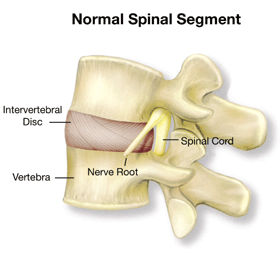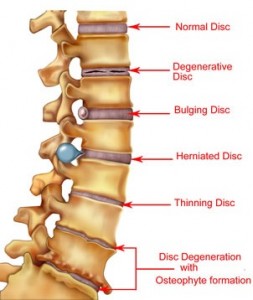Spinal cord injury (SCI) is a damage to the spinal cord that results in loss of motor function and sensation. The spinal column is consisted of 7 cervical, 12 thoracic, 5 lumbar, 5 sacral, and 4 coccygeal vertebrae. A typical vertebra consists of a body, and an arch.
Spinal cord injury can either be complete or incomplete. A complete injury involves the loss of all motor and sensory functions in the dermatomal distribution below the level of the lesion. In incomplete lesions, some combination of neurologic functions is retained below the level of the injury. With incomplete lesions, sensation may be intact, impaired, or absent below the level of the lesion (Kinnealey, Weiss, & Morgan, 2002)
Types of Incomplete Injury
- Central cord syndrome – the middle of the cord is more damaged that the outer areas, causing more upper extremity involvement that lower extremity.
- Brown-sequard syndrome – results from injury to one side of the spinal cord, causing weakness and loss of proprioception on the side of the injury and loss of pain and thermal sensation of the other side.
- Anterior cord syndrome – results from injury to the anterior part of the spinal cord, causing weakness and loss of pain and thermal sensations below the injury site but proprioception remains intact.
- Posterior cord syndrome – results to damage to the dorsal columns, causing loss of proprioception with other sensory and motor function remaining intact.
Spine Conditions
Symptoms
- Loss of voluntary muscle control in the trunk and extremities
- Sensory impairment
- Loss of body temperature regulation
- Respiratory dysfunction
- Cardiovascular dysfunction
- Inability to control bowel and bladder function
- Loss of sexual functioning
- Psychological symptoms such as depression, anger, anxiety and a feeling of loss
- Inability to regulate heart rate, blood pressure
- Muscle atrophy
- Spasticity
- Neuropathic pain
OCCUPATIONAL THERAPY PERSPECTIVE
People with spinal cord injury can return to their prior role of function, which is provided by occupational therapist through purposeful functional activities, education, and support. A thorough initial interview is conducted with the patient and family member in order to determine prior level of function. Instruction in the appropriate weight shift is important. This helps reduce pressure ulcers. Bowel and bladder management, home management, and meal preparation is addressed once progress is made. With increase progress, participation in community activity such as shopping, driving, using public transportation, and working is addressed.
Evaluating the home environment and making the appropriate home set-up, equipment, and strategies to increase independence, safety, and accessibility is another important aspect of occupational therapy. Wheelchair management skills are also important in occupational therapy intervention. Occupational therapy performs family education and training for discharge preparation.
References
WebMD, article source: Spinal Cord injury, retreived from: http://www.webmd.com/brain/tc/living-with-a-spinal-cord-injury-what-happens
Atchison, Ben J. & Dirette, Dianne K., 2007. Conditions in Occupational Therapy: Effect of Occupational Performance.
Kennealey, Moya., Morgan, Marlene J., Weiss, Donna., 2004. A Practitioner’s Guide to Clinical Occupational Therapy.

